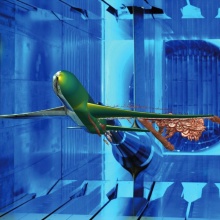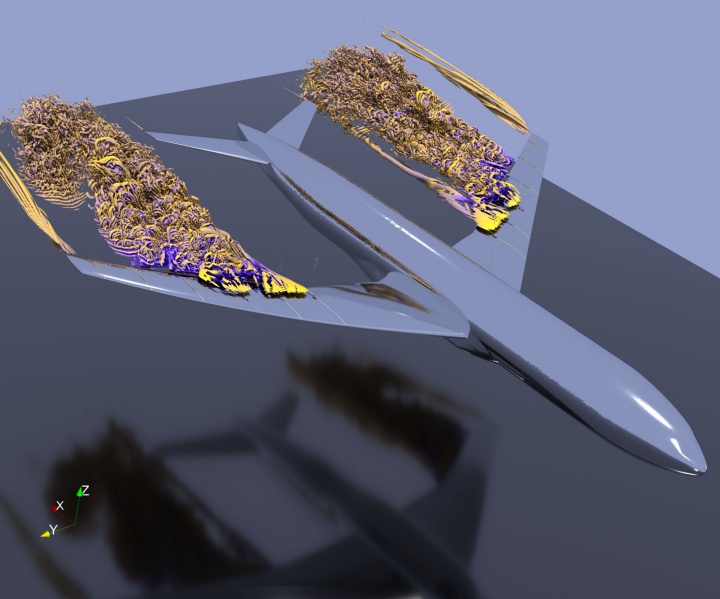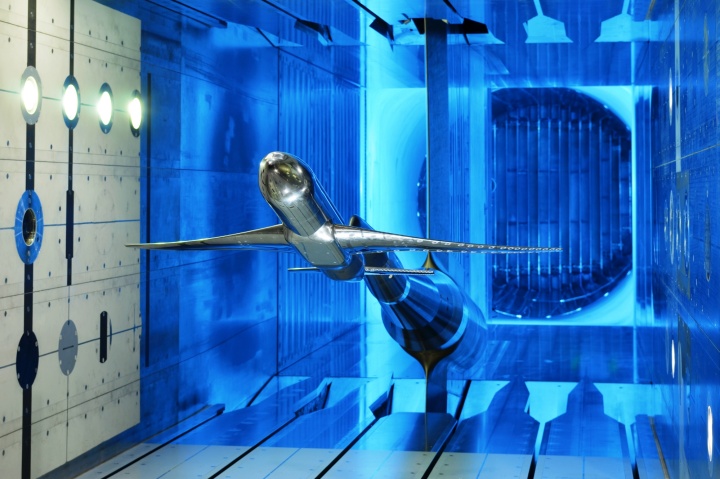Aircraft should become more energy efficient and at the same time fly stable and quietly. To achieve this, it is necessary to gain a better understanding and prognosis of the flow-physics up to the borders of the flight envelope. This is precisely the aim of a new group of the German Research Foundation (DFG) entitled "Unsteady flow and interaction phenomena at high speed stall conditions". The speaker is Dr Thorsten Lutz from the Institute of Aerodynamics and Gas Dynamics at the University of Stuttgart. The Technical Universities of Munich and Braunschweig, the RWTH Aachen University and the German Aerospace Center (DLR) are also involved in the research group.
If an aircraft is travelling at very high speed, a shock wave can occur with flow separation downstream of it. This phenomenon, known as "high speed stall", results in changing loads that can damage the structure and affect flight stability. In order to avoid this, safety factors are taken into account when designing and building aircraft. The problem here is that if the aircraft is designed too heavily, it unnecessarily consumes additional kerosene, which damages the environment and drives up costs.
The aerodynamics of transport aircraft at the borders of the flight envelope is characterised by physical phenomena, some of which have not yet been understood. A typical phenomenon is transient loads, i.e. very rapid changes in forces. These can cause vibrations at the wing, which leads to shaking. Due to the complex interactions of these factors, the load limits of an aircraft can only be predicted insufficiently so far and will only be proven on the finished prototype during test flights.
Focus on quieter and more economical engines
In this context, the aim of the new research group is to fundamentally investigate the open questions of flow physics in the high-speed stall of transport aircraft. For this purpose, numerical models are to be developed that allow the aerodynamic phenomena to be predicted more accurately than before even before the aircraft is built. This is an important aspect for developing lighter and more economical aircraft. A special focus is placed on the "Ultra High Bypass" technology currently being promoted by many engine manufacturers. These engines of the future are designed to make flying quieter, more economical and cleaner. However, they are larger and require more space under the wings, which in turn has an impact on the balance of forces and stability.
Tests in cryogenic wind tunnel
The research group intends to carry out flow field measurements and numerical studies of the physical mechanisms. Some of these measurements can only be performed in a so-called cryogenic wind tunnel. Instead of air, as in conventional wind tunnels, nitrogen flows here, which is cooled to extreme sub-zero temperatures. This allows aerodynamic conditions to be simulated on the model, as they occur during the actual flight of a large aircraft. The measurements are to be carried out at the European Transonic Wind Tunnel ETW, financed by the Helmholtz Association (HGF) and DLR, with Airbus providing a suitable wind tunnel model. Such tests can easily cost more than 100,000 euros per measuring day, which is why the ETW has so far mainly been used by industry. "It is very gratifying that the European Transonic Wind Tunnel is now also benefiting science to a greater extent thanks to the joint support of the DFG, the HGF and DLR," says Dr Thorsten Lutz, spokesman for the new research group at the University of Stuttgart. "In addition to detailed numerical simulations, this will make it possible to conduct complex wind tunnel experiments to investigate the aerodynamics of transport aircraft at the flight envelope borders."
Expert Contact:
Dr. Thorsten Lutz, Universität Stuttgart, Institut für Aerodynamik und Gasdynamik, Arbeitsgruppe Luftfahrzeugaerodynamik, Tel. +49 (0) 711/685-63406, Email Dr. Lutz




